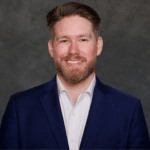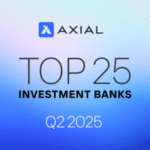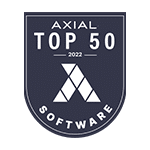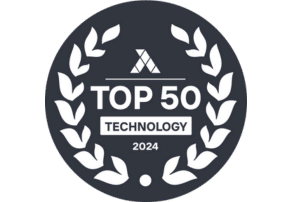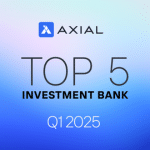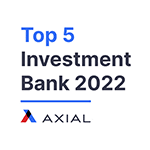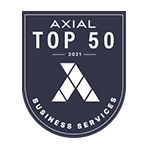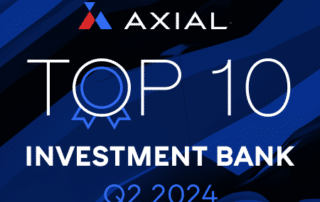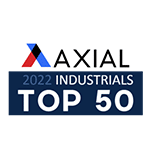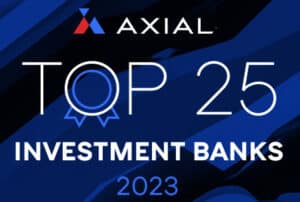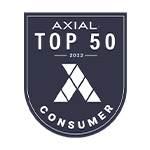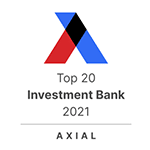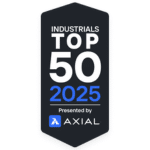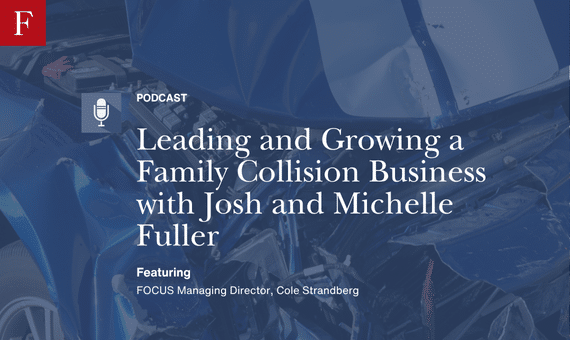
Leading and Growing a Family Collision Business with Josh and Michelle Fuller
On this week’s episode, Cole Strandberg chats with Josh and Michelle Fuller, fourth-generation leaders of the 111-year-old Fuller’s Collision Center. In a time when consolidation is reshaping the industry, the Fullers have doubled down on what makes their business strong—clarity of vision, marketing with purpose, and strategic planning through the lens of long-term value creation. They talk about how they’ve built and maintained a powerful family business, how they think about specialization and branding, and how they’re using tools like ADAS and exit planning strategy to set the stage for future growth.
Listen and Follow The Collision Vision.
Cole Strandberg: See you both and you’re coming fresh off a trip overseas over in the UK. So greatly appreciate you joining us even with some jet lag. But in our our quick chat here before we hit record, I don’t get that sense. You guys are both as energetic as ever. Guys. I’ll, I’ll, I’ll dive right in. Two extremely dynamic personalities, extremely fun leaders and great leaders in this industry. And you have an incredible story here as well with Fuller Collision Group. Talk to us about the story of Fuller’s Collision and to you guys, what does it mean to be a fourth generation family business in today’s industry that’s consolidating and changing so quickly?
Josh Fuller: Thanks, Cole. Thanks so much for having us. Appreciate it. You know, I’ll, I’ll start off, Michelle’s got a lot of, you know, she’s got a lot of value then she that she brings in a lot of additions. So coming in and off of coming into a fourth generation family business, we’ve been in our area since 1914. I am 4th generation and we’ve done everything over the over the years through gas stations to used car lots to OEM dealerships to aftermarket manufacturing and sales distribution, distribution companies where in the last 20 years our focus has solely been on service of mechanical services as well as collision repair. The last 10 years has been really ramping up for collision repair. As you can very much know and tell that the industry has been super dynamic in the last 1520 years and that’s kind of where my focus has been everything all the way through ramping up through multiple locations and through entrepreneurial drives through, you know, our latest 8S company. So with our 8S diagnostic solutions company, we’re operating 2 locations and a couple mobile units servicing our own facilities as well as third party body shops. And that that’s been, that’s been awesome. That’s just been kind of the cherry on top of the the cake as far as collision repair goes. And operating our multiple collision repair locations is just seeing the dynamic change of, you know, everything coming in for the vehicle technology. And then, hey, you know who, who gets to work with their family everyday between my brother run mechanical, my sister running with marketing and community outreach, and then Michelle as a value growth advisor coming in to really kind of looking at our company and looking to see what we do and see where the opportunity is. It’s, it’s been awesome. It’s been a it’s been a road less traveled, but certainly a a fun one.
Cole Strandberg: No question, no question. Super cool. I mean this is a story of old school legacy meets new school operator and and evolving and adapting with some of the changes and opportunities in this industry. And the addition of Michelle of course is awesome. Michelle, from your perspective, talk to us about what it means to you to be in this business, 4th generation and and operating it like never before.
Michelle Fuller: Thank you, Cole. And again, I’ll echo Josh’s sentiments. Thanks so much for having us today. I’m super excited to have some fun over the next, call it 30 to 40 minutes here on your show. So, yeah, I mean, I think obviously I bring a little bit of a different perspective because I was married into the business, but it’s it’s the the sense of pride, the sense of commitment, the sense of obligation. And and you know, I’m not going to lie, the sense of pressure is all there when you’re running a fourth generation family business. There’s not many businesses that get to that point. And so my corporate self is going to throw a couple stats out at you, but I think when you hear them that it’ll be some staggering information. Interestingly enough, 90% of businesses in in the US are either family owned or controlled, which is a staggering number in and of itself. But interestingly, 30% make it to the second generation, 12% make it to the third generation, a mere 3% make it to the 4th generation. So I think, you know, just in those numbers themselves, I think a lot of folks, you know, kind of realize 4th generation, wow, that’s, that’s, that’s incredible. But I think those numbers really emphasize just how amazing it is is to get to this point. We, we recently had and built a 110 years celebration video and we had a number of family members on the video. And my father-in-law was on Dick Fuller and he said these, these words. He said, you know, 110 years is a long, long time. And we’ve used that wording and that verbiage in a number of different ads and, and marketing pieces because it’s so simple, yet it’s so effective. It really is 110 years is a long, long time. So we have a lot to do. We have a lot of, as I mentioned, commitment and obligation, but we’re super excited to see where this continues to go because it really is just an amazing as an amazing feat and one that we we don’t take lightly.
Cole Strandberg: That is so cool. I’d ask if you could send me a link to that video. I’d like to include it in the show notes if you’re OK with that for folks to check that out. Because 110 years is definitely a long long time. Kind of crazy the stats are dropping too. Honest about the multi generation businesses and the comment around pressure certainly speaks volumes to me. Heck, I was second generation of a business started in 1988 and I felt some level of pressure on legacy. I cannot imagine two generations later and 70 plus years later what that looks like. That pressure seems insane. And to that and I’ll start with you Michelle and then I want to hear from you Josh as well because two different perspectives. What are the challenges and then the advantages of running a multi generational business in this age that we talked about of consolidation and innovation and so much change?
Michelle Fuller: Yeah, no, thank you. And I’ll definitely defer to Josh to talk about, you know, a lot of the the advantages piece and and certainly he’ll comment on the challenges too. But one of the things I’ve noticed again, just just coming in recently is, you know, this sense of, you know, either long standing employees or, you know, other kind of family members, just thinking about the way we’ve been and really helping them to understand where we want to get to, right. And so you kind of, you know, you’re operating for so long. Yes, we’re, we’re, we’re a business in Auburn, MA, but now we’re growing and we’re growing outside of, of the comforts of just our, our little town of Auburn, right. And so helping them understand that we can continue to hold on to those values. We can continue to hold on to all the things we stand for even though we’re growing. And it’s up to us to make sure that we do hang on to those and weave all of that importance into our growth plan. So it’s, you know, that’s kind of just been my, my experience with it, but I’ll defer to Josh to, to comment on the specific advantages and the specific challenges he’s seeing.
Josh Fuller: Thank you, Advantage. I would really just go right back to having have a fourth generation and having a reputation and a commitment to the community just really continue to be that backbone that really serves as a kind of a launching pad to continue and move forward with our values, right. I mean, the comfort level on anything that you do, whether it be business or family is consistency, right? So you have comfort, consistency, but then you’ve once you throw in the ability of a drive in the theory of, well, if you’re not growing, you’re dying or what’s next? Staying ahead of the curve. It’s my firm belief in, you know, of generations before me that every generation has added something of their own unique ability and characteristics to the brand that is, you know, catapulted the brand forward, right. And so it’s just it’s like building a house. It’s you know, you start with a solid foundation and then you kind of go from there. That’s what’s been really cool. And I would say one of the largest advantages that we’ve had your disadvantages, well, you name them, you know, what’s what’s small business or medium sized business has any disadvantages, right. In our industry, you know, we, we’ve just, we’ve seen, we’ve seen so many, so many different things between your regulations come in and then just the inconsistency of vehicle repairs and the necessary capital demands, whether it be human capital or financial capital to do just that. Stay ahead of the curve. You know, the, you know, the technology and the equipment and the people that you need to fix today’s cars is vastly different than even five to seven years ago where, you know, call, if you, you’ve, you know, think back 10 years ago, you know, putting out 1/4 on a 2000 and you know, 7 Camry was ultimately the same of putting 1/4 on a 2000 and you know, home Camry, right? Not much has changed now. Navigating through the changes has been, you know, obviously super challenging, but it’s also been a lot of a lot of fun. And that’s actually where we’ve been able to find consistency and comfort is that, hey, you know what? Between our people and between our drive and between our commitment to the community and our reputation, we’ll find a way and we’ll continue to grow.
Cole Strandberg: I think that’s what’s so interesting about this story. Like, I don’t know, when I think of older folks who have been around for a long, long time were so quick to say, like, think of all the change that they witnessed in their lifetime and all the history that they witnessed in their lifetime. In this case, we’re talking about this as a business and all the change that fuller’s has seen in its lifetime. And how do you balance that history and that legacy and that tradition? How do you how do you kind of compare and contrast that with the evolving modern customer and that technology like it is a totally different business than it was a decade ago, but it’s also the same. Josh, that was a long winded question, but any general commentary on that?
Josh Fuller: Yeah, real quick without being long winded because I have a a sense of, of doing that without being long winded. I would say, you know, we’re driven by, you know, the we’re driven by the first thing is our commitment to the community, our commitment to people and our commitment to carry on the tradition of of, you know, a fourth generation business, right? You know, what can we do on a daily basis to ensure that all the people and all the things that we stand for inside these four walls can continue to serve our customers, right? Well, in order to do that, we’ve got to realize, you know, what kind of vehicle is coming to us and what kind of damages it has and what equipment we need to fix it. At the same time, we’ve got a level up as far as what are the needs of our customers, right? And it’s, you know, 10 years ago, I remember when you first started hearing this, like, oh, well, you’re now into the the age of the Amazon customer immediate gratification. Get it tomorrow this set. So then it comes into like, oh, well, how do we do this? You know, we just can’t like call them in three weeks after they drop off and tell them it’s done. We got to call them in the process. What? Who does that? You know, oh, it’ll be done when you get it, we’ll call you. Yeah. So through those, through those changes, you’ve got to be able to, you know, look at, you know, the technology of the assets of the tools that are responsible for helping you to get over those challenges. And that’s something that I believe. And I think that we continue to do a great job as you know, how do we level up and you know what technology and new things can we use to best serve our customers.
Cole Strandberg: Well said, Michelle. Anything to add there?
Michelle Fuller: Now he was long winded enough with that one. Just kidding.
Josh Fuller: You have a conversation, you should have the conversations in our house.
Cole Strandberg: Love it. Well, obviously we’re here to talk a lot about marketing and marketing your independent organization. And I think yours is a company that marketing’s awesome, right? Because you have such a great story to tell. It’s all about storytelling. I think a big part of the story that we haven’t fully gotten into yet is the story of each of you and how we ended up here today. I think Michelle, yours is super non traditional here to be on a collision repair podcast. So I want to save you for last. But Josh, yours is super interesting too. Talk to me, take me from before you guys famously met all the way in London originally. Take us through your career and how we’re here today. And Josh, let’s start with you on that one. That’s.
Josh Fuller: Interesting, Cole you know, it’s, it’s, it’s a great question in I wish we had a plan, but a lot of things don’t have plans. I was always an entrepreneur at heart between landscaping business and several jobs through high school. However, I could make a buck or, you know, serve people in just make a difference in the world. That’s kind of what I was doing. Went to school at Bentley, graduated with a finance degree and went to work corporate America very quickly learned how to run businesses and build relationships through the usage of Excel and reaching out to people to collaborate to reach our, you know, goals, both internal and goals of a a huge corporation. I very quickly learned that, you know, there was a lot that I was able to take away from that, but I did not like the limits that it actually posed. So I had the opportunity to come back and work in the family business. So after Bentley education and some great experience in finance, I came back and started washing cars and got my appraisers license, learned the business and then tried and pretty much went from there. Through a level of efficiencies in relationship building and building culture, we were able to continue to grow the business. We saw a double digit sales growth, you know, all the way up the 1st 20 years and then we were able to branch out through opening up a rental car business, doing a brownfield, the Greenfield, some acquisitions and then some entrepreneurial pieces of it. So that’s pretty much how we get started. And then, you know, you know, rewind back, you know, probably one of the most important thing is, you know, my junior year in, in college is when I chose to study abroad and that’s when I met Michelle. So our careers ran parallel, not very much involved for a long time, even through, you know, 1211 years of having children. So it’s been interesting to say the least, to get to this point. But it’s it’s it’s it’s, it’s working well so far.
Cole Strandberg: When worlds collide, man, this is a power couple right here. Michelle. Talk about, as Josh is going down this path, what your path was looking like throughout your career.
Michelle Fuller: Thank you, Cole. Yeah, a little bit different. I actually I went to a state school, I went to Penn State University and graduated with a degree in marketing International business. I did meet Josh junior year at in London and I, but I went to work in finance as well at UBS and made a career of in the wealth and asset management space roughly 2 years ago. I in my kind of quest to continue getting certifications as you can kind of see behind me, I obtained what’s called a certified exit planning advisor certification as part of my build out of, of the private wealth distribution channel at John Hancock. And it was, it was very life changing for me. It was an interesting time because I was able to kind of combine my experience with with finance and by experience being married into a family business. And so when 2 worlds collide, right. So I had an opportunity to step away from corporate that I took and have been working in Fuller collision group since September. And I found you Cole, because I have No Fear on LinkedIn and like Josh, we got to get our name out there with, with folks. And so I was like, how can I get on? How can I get Josh on more podcasts? So I did some research, found you Cole, reached out to you on LinkedIn, started, you know, talking and we met at the the three of us met at this the SEMA conference and the rest is history. So I’ve and you know, through my kind of exit planning education and experience on both the finance side as well as the business side, I’m able to just offer a very unique perspective to the organization. And it’s been just, you know, a wonderful last seven months, an interesting last seven months coming from 20 years in corporate to to kind of small, medium sized business day-to-day, but. You know, I mean, just call me Bob from Office Space. I’m there to make some recommendations and and you know, help us operate more efficiently. I’m kidding. But you know, really just touch every part of the business, whether that be, you know, strategic, operational, marketing, human resources, you name it. I’ve really kind of delved into to each part and it’s been just an amazing experience to help out.
Cole Strandberg: The story that you guys are telling here checks so many boxes for what I like to talk about. We have family business, we got a couple finance backgrounds. It’s a scaling organization rooted in a ton of awesome history. I love this and I wanted sort of start to bring this back on track on my end because I get so interested in this. Obviously, we’re here to talk a fair bit about marketing and here we’ve done a great job of kind of setting the stage with the story. Now I want to get a little more tactical with us today. Josh, you mentioned something that I noted down along the lines of building the foundation before you build the skyscraper on up. What does that mean in the context of both marketing and strategy in your business?
Josh Fuller: Well, if I had my choice, I’d be in the basement with my red Swingline stapler. So with the value creation model, it definitely brings a different change, you know, to it because I, you know, growing kind of growing up, I would say in my 20s in the business, I learned very quickly that they’re really the way to make change or affect change was to find a very effective way to fix cars quickly and keep customers happy, right? If you can do that, then everything else will be successful. So the thought process of having to think about now a marketing plan or, you know, getting your name out there, you know, we were blessed with a great reputation and a great book of business. You know, a lot of those things just my brain didn’t work that way. So it’s been a blessing having somebody else that understands, you know, the the need in the application and the execution of having those marketing things come into play. If you looked at, you know, our marketing initiatives five years ago to where they are now, it’s they’re vastly different and thankfully they are different in the mirror, pretty much mirror the times. So I mean that is the foundation, you know, is you’ve got a core business that can service customers, it just can change dynamically. Then once you get to the first floor, second floor, you know, once you get to the roof line, you know, the angles that you have needed to to make the cuts on and how you do certain pitches are vastly different from when you were building the first floor and just laying down flooring. So if I could mirror that at all as far as analogy to business, that’s kind of where I’m going with it.
Cole Strandberg: Love it, love it, love it. Michelle, talk to me if you would about if you’re an independent shop listening here. Like man, you guys are doing some cool stuff. You’ve pivoted into growth mode. What are the first steps an independent shop owner like that should take when trying to clarify their own marketing and growth strategy and trying to emulate some of the stuff that you guys are are doing and putting in place?
Michelle Fuller: Yeah, No, I, I think there’s, there’s an important dynamic that every owner needs to ask themselves because there’s really two ways to grow. As you know, it’s organic growth and inorganic growth. Inorganic growth is obviously, you know, growing the, you know what you have organically meaning get more customers, do more business with, with the the the brick and mortar that we have in front of us. Inorganic growth is obviously acquisitional growth and you know, growing and scaling is a keyword here to to essentially grow your brand, grow your footprint and essentially grow the business. So knowing those that, that those two concepts is important. Then I think another important concept and, and question that owners need to ask themselves is are you a lifestyle owner or are you a value creator? And what do you have the will and desire for? Because that’s really going to set your path in terms of how much you want to grow. So you might say to yourself, all right, well, Michelle’s throwing around some, some crazy terminology with me here. Value creator, lifestyle owner. What’s the difference between those two? Well, a lifestyle owner is essentially where a lot of owners see themselves, right? They, they’re maintaining a business to support a lifestyle they’ve built. They’ve got the cars, they’ve got the houses, they’re comfortable. Their focus is income generation, maybe some freedom. I want to golf when I want to, I have work life balance, whatever it is. But they really see the business as their personal income source versus something that is a living breathing asset per SE. They’re involved in the day-to-day task of the of the organization. They’re not necessarily focusing on scalability or even transferability. Whereas a value creator is, is someone who’s really looking at scaling their business. They’re thinking about the transferability of their business. What am I going to do with this business 20 years from now, 40 years from now? Am I, am I going to hand it to the next generation, which is obviously something we have to think about as 4th generation owners? Am I going to sell out completely? Am I going to transfer it to internal employees? These are all things that we have to be thinking about as business owners. But a value creator is again, thinking more along the lines of long term growth, increasing enterprise value. They’re thinking of it as as an asset to grow. And they’re really, you know, from an operational standpoint, they’re focusing on building systems, building teams, building leadership to really handle the business. So that that, you know, there’s there’s that that delegation of responsibility, if you will, they’re not as as in as involved in the day-to-day. So that it is again, you know, eventually transferable. So I think once you really, and this is, this is a core Part 1 of the core parts of, of a value growth advisor and a, and a certified exit planning advisor is really on helping that business owner understand where they sit. And there’s nothing wrong with either one of those choices, right? It’s just where, where are you in that scope of lifestyle owner or value creator? If you’ve chosen that value creator path, that’s when we really start kicking things into gear when it comes to building efficiencies and you know, really marketing the business, making acquisitions and thinking about, about the future. And so, you know, when we, when we sat down with our value growth advisor, you know, probably, I guess it’s been about two years ago, that was a decision Josh had to make and he chose that value growth path, that value creator path. And so once that that decision was made, then it was like, all right, game on. We are, we are growing this thing. And you know, the marketing piece, of course, you know, speaking to that specifically, that’s when we’re really focusing in on SEO. We’re focusing in on Geo fencing campaigns. We’re focusing on making sure we have the right brand, the right tagline, the right, you know, and, and measuring all of the ROI that comes into that as well. Because we definitely don’t want to be, you know, spending dollars when we’re not seeing that return on investment accordingly. So it’s there’s a there’s we’d probably do a whole other show on on marketing and value creation, but that was where really pivotal points for us when it came to, you know, kicking this into high gear.
Cole Strandberg: Yeah, no wrong answer between lifestyle and value creator, it’s it’s a lot that goes into making that decision. It might sound like an easy one. You don’t really want to say that you’re a lifestyle operator. There’s nothing wrong with that though. It all depends on what you want the end outcome to look like and the inputs that you personally are willing to put in today to reach that end outcome. You’ve mentioned Value Growth Advisor a few different times throughout our conversation, and I want to dive a little deeper into that later in our conversation, but set the stage for us. What exactly is a value Growth advisor? Why are you guys utilizing that and should others consider doing the same thing, especially if they’re pursuing that value creator path?
Michelle Fuller: So I’ll, I’ll talk a little bit about what it is, but I’d love Josh to talk to our audience about why he chose to work with one because it’s, it’s, you got to be ready for it and you have to be ready to, to really dig in and, and do the work to reap the benefits of it. So a value growth advisor is someone that really helps you to, you know, think about where you want to take your business and help you get there. We, we hired one, they’re, they’re cultivate advisors. Our specific advisor is the guy by the name of Greg Maddox, who’s fantastic. Just a quick couple points. He started first with us to help us determine the value of our business. You, you can’t build, and I’m now I’m talking my financial side. You can’t build a financial plan if you don’t know your, the value of your business. You can’t build a business plan if you don’t know the approximate value of your business. That’s an important starting point. Then you know, again, we went through the, the, the questioning around value creator, lifestyle owner. But then, you know, one of the things and the key, the key piece of Greg’s involvement with us is really working on 4 intangible capitals that really drive 80 to 90% of the value of the business. And those capitals are customer capital, structural capital, social capital and human capital. Lots of terminology there. Let’s just quickly give you an idea. Your, your human capital is your people, right? What kind of humans do we have working at our organization? And are they, do we have a leadership team? Is our, you know, our, every one of our techs where they need to be? Are we establishing mentorship programs? Do we have an apprentice program? What are we doing from a employee recognition and employee career path perspective? All of that makes up your human capital. Customer capital is essentially the diversification of your customers. Structural capital is your Sops, your efficiencies. What are we doing from a process perspective and all are our processes as effective as they could be. And then lastly is your social capital and that’s your brand, that’s your reputation, that’s who you stand for in your respective communities. So really honing in on all of those and getting really into the nitty gritty on each of those is going to help build a more valuable transferable company. And that’s essentially what we set out to do. So I’ll turn it over to Josh because, you know, obviously I knew the merits of all of that as a SEPA, but you know, I think a business owner’s perspective is super helpful to say This is why I signed on to do this.
Josh Fuller: Thanks, Michelle. So that’s, that’s pretty much the, the structure of it, right? And so with any, you know, great thing there, it has to become somewhat of a plan or there’s some, just some type of game plan in order that you want to achieve your goals. And that’s pretty much what we use the, the creation value creation methodology and working with Cultivate. And Greg is really looking at things from a different lens. So the first thing is just exactly that is you’ve got to take a look at, you know, yourself as, as an operator and you look at your management team, your leadership team, and you really got to define where you want to be, what, what you want to go, go after. You know, having in a fourth generation owner in, you know, being here in the business, you know, you, you build a certain identity. A lot of collision shop owners, especially independents, build a huge identity within the community, you know, as a, as a, you know, lifestyle owner. And that, that, that’s awesome. I, I pretty much lived that and loved it for as long as I good, right. But then I got to a point where I was kept hitting a brick wall and I didn’t really know the answer. And then through kind of seeing what Michelle was doing, you know, looking at other businesses and, and doing for other industries, really I’m like, well, that might make sense on our end because it is something different, but it did, it really kind of took that come to this, the next level. The biggest thing is 1, you know how to decentralize myself, right? And what I quickly learned is that the quicker I can get out of the way and let our people do them and let our people lead, then that’s where we’re going to continue to grow and grow the fastest. So building those tools, building the structure, building the processes in place to continue to build and leverage our strengths with our people. And some of the other tools, that’s where we’re seeing the fast growth. And that that’s the exciting part because as an independent owner, a lot of times, you know, you, you bear the weight on your shoulders, you know, every single day. And you’re often, you know, from outside, from outside influences. You’re often, you know, really kind of challenged with outside influences that are beyond your control, right? And so when you have those come into play, such as regulations or a downturn in the economy or the increased cost of capital, that really drives fear, all right? And fear is the one of the biggest things that pauses growth and pauses any type of strategic direction. So getting beyond that, you know, has been huge and really relying on our people, you guys to the next level has been has been huge.
Cole Strandberg: Awesome. And I had the opportunity to actually speak with Greg. Thanks to you guys made that introduction. And for those wondering on the who’s listening, who are wondering, fantastic guy, not the famous Braves pitcher of, of many years back in the 90s and early 2000s, but fantastic nonetheless. Josh, you mentioned some of these things that are out of your control. And from my perspective, one of these things that are out of all of our control is consolidation and and that continuing on, it’s not slowing down, it’s only picking up from a marketing perspective. How have you guys managed or or thought of communicating in a world where these big brand consolidators are dominating some of the more traditional like paid media? How are you standing out in the noise without, I imagine, hopefully breaking the bank?
Josh Fuller: Yeah, I’ll take that before I turn over to Michelle, just to start with again, it really gets down to core values, right. Collision repair is a different type of business. It’s it’s a, you know, point of sale. People only need you when they you know, need you, right, They’re not, you know, going throughout their, you know, day-to-day, month to month, say no, if I ever need a good Body Shop, where am I going to go? Right? It’s just like, you know, it’s so sugar, I got a problem and I need solution. So how do you be the first, you know, choice right then and there? So we just want to make sure that if you look at every opportunity to penetrate a customer’s mindset that we’re somewhere in the top three, whether it be SEO online, whether it be insurance company referrals, whether it be, you know, on a billboard or radio campaign. Great. But I’m going to go back to the financial piece. You’ve got to have a strict KPI where you have a great budget and you’ve got a way to an ROI to track that, right. You know, you’ve got a, you know, budget, a certain percentage of your income to say we’re going to allocate to these six marketing initiatives that makes sense this year to get us out in front of our customers the best way because in a collision shop, the best way I believe, and it’s, you know, you talk about a marketing budget for an independent facility, It’s like deliver to your customer, right? Do a good job, update your customer, do what you say you’re going to do, like that’s your marketing campaign right then and there. So to combine, you know, both that what you do on a daily basis with the funds that you can spend on the outside sources, I believe is a is a truly, you know, dynamic, you know, combination. But again, it gets down to, you know, I believe is the most important is identify every single customer touch point and make sure that you can just touch each one and improve it as much as possible and just continue to review that over time. And that’s been a huge help for us. It’s just like, all right, what are the touch points? How have they changed? How can we increase some? Is there technology or is there people? What can we do better to really get into the hands of the customer so that they become our raving fans, they become our best referral source and then continue to drive our growth?
Cole Strandberg: Love it. Well, and I’ll, I’ll open this to both of you as well and maybe Michelle will speak with you. Are there any marketing or branding efforts that have worked especially well for you guys that jump out to you? I know that that 110 year video sounds fantastic. Any other tactics that you could share for companies like yours who are looking to optimize their marketing and, and and make sure they’re top of mind when it comes time?
Michelle Fuller: Yeah. So one of the first things I set out to do when I came in was kind of lift, give our marketing a little bit of a lift. And so one of the things I’ve talked to Josh about over the years is branding. That was important, but it was, you know, also this concept of content. And Josh is, you know, I always like Josh, we need more content, we need more content. He’s like, what do you mean we need content? And I’m like, we live in a digital world and whether we like it or not, right? And so our website is our digital doorstep. It’s the first thing that our clients see when they or customers see when they come to to visit us, right, If they’re looking for a Body Shop, are we making sure that our SEO is effective? Are we making sure that our website is easy to navigate, it’s clear, is it action oriented? Do we have the ability to do, you know, estimates right then and there? We just infiltrated a Body Shop booster and AI onto our website so that we are literally reachable 24 hours a day, seven days a week, even when the shop is closed, right? You know, are we incorporating testimonials? Are we making sure that every customer that leaves as a happy customer is giving us a review? Those are important and those obviously get put on our website. So that’s all a testament to the work that we’re doing, the world we live in, right? We go on Amazon, it’s like, I don’t know about you, but when I buy something on Amazon, I’m looking for five star reviews, right? And I’m looking for the most amount of reviews. So I don’t even know any of these people that are giving the reviews when you actually think about it, but it, it is social proof of the the quality of what you’re about to buy, right? And so all of that is super important for our customers. We actually outsourced our marketing, so fractional marketing. Partner called Stratosphere Studio and and capture the keys. They have done an amazing job with us thus far. They’re helping us with our social media posting, which is always important our pay per click, our ads. We’re actually launching A geofencing campaign with them at the end of actually this week that’s launching. It’s funny, I just Josh just sent me an article and in within the article is this concept of e-mail marketing. And that’s something that I’ve kind of talked to Josh about and he’s like, we don’t need to e-mail our customers. We’re fine. Like it’s, you know, like, wait a second. I’m not the only one that’s saying it’s important for us to send, you know, periodic newsletters, get your name and your brand out in front of these folks because that will facilitate A referral, right? Maybe you’re not the one getting into a car accident and I hope you’re not. But if you know a friend that recently got into an accident wreck, it’s important to have in the tip of your tongue. Hey, you know what? I went to Fullers and they were fantastic because they were just in my inbox last week and I immediately remembered my awesome experience with them. Right, We talked, you know, about even just this the concept of content marketing. It’s not just videos of of who we are, but also, you know, hey, like, you know, could we consider doing a video of a before and after? Can we consider doing a video of, you know, explanation of the insurance claim process, right. These are all ways our customers and in this day and age are absorbing information about who we are and what we can provide to them through through our company. So you know, again, just wanted to get tactical and give you some of the things that we’ve started to leverage and work through in our own business and we’ve seen success with. So we’ll, we’ll have to do a whole other show on ROI cool in a, in a, in a few months here. So I can, I can tell you what’s really benefited the most. But I would say in in all we’re doing in the marketing side, all of these levers we’re pulling all really combined to to build an effective marketing strategy.
Cole Strandberg: I’m going to take you up on that. I think that’d be fascinating to see an unfiltered rendition of what’s worked, what hasn’t, where have we wasted money, what’s been a home run. I think that’d be an awesome conversation to have. I’m jumping around a little bit because I know we’re getting a little bit tight on time and there’s so much to talk about. We don’t have enough time to do it. So we are going to have to have you guys back on sometime. You’ve mentioned exit planning and even exit planning is a strategy, your SEPA designation, all sorts of stuff. Talk to me about why exit planning really is just good strategy. Even if you have no intention of selling, even if that next generation, if Fuller’s becomes a fifth generation business, exit planning is still a good strategy.
Michelle Fuller: So I’ll take that one first. I think you know it. It’s amazing how I kind of wish it wasn’t called exit planning because when you say exit planning, people immediately think, oh, you’re going to sell a business. It’s like no exit planning is really good business strategy and it helps you prepare for so many things that come that you may not necessarily be prepared for. You know, I think especially in this day and age and, and Cole, you can talk to this unsolicited offers happen. Do you want to be prepared for that unsolicited offer or don’t you? These are important considerations, especially as private equity is infiltrating every part of the global economy, collision repair included, right? Things happen to owners, things like disagreements, things like death, things like disability, right? Do you want to be prepared for when those things happen? If you are implementing an exit planning slash good business strategy, you will be prepared so that you’re not caught on your back foot and you have your, your business orders in a row, you have your financial orders in a row and you’re ready for pretty much anything that’s going to come at you. So, you know, I, I stress those pieces, the unsolicited offer piece, again, that happens more times than you care to count and that, you know, just being prepared for, for things that could potentially happen to owners. And if you have that business strategy in place, and if you are preparing and it takes years, it’s not something that happens in months. It sometimes takes years to get your business to where it needs to be to be prepared for those things, then you’re in a much better spot than than potentially the next person. Josh, any comments from you on on this piece? Because I know that, you know, you live it every day.
Josh Fuller: Yeah, I, I mean, it’s, it’s definitely a different look at it, especially when, you know, coming from a Bentley financial, you know, education, you know, the amount of business books and classes that I went through and building a strategic plan and a business plan. You know, these are all very important in a business. But then when he, when, you know, I was introduced to exit plan and like, I don’t need that, I’m not going anywhere, I’m not doing anything. But it really is a great strategic plan and it really kind of checks the box coal of I believe what really is the goal of most business owners is like, dude, I want options. Like I can’t control. I can, I think I can control everything inside these four walls 24/7, you know, but I really can’t. But you can’t control what’s going to happen on the outside, right? And Michelle talked about, you know, death, disability, you know, disagreements, unsolicited offers like these are all beyond control. So what can you do as a leader in your organization, with your leadership team to make sure that you’ve got options at any point in time? Nobody says you have to execute on those options, right? But it’s good to know that you’ve got a choice, right? And you know, what I found been one of the best things about it is by decentralizing myself, I’ve gained the freedom to do what makes me happy, right? And by doing what makes me happy makes me a better leader because I’m not a pain in the ass. I’m not micromanaging people. I’m letting them do them. All right. So if I’m happy, they’re happy. And guess what? If if you know, your people are happy, your customers are happy. So that’s the biggest thing I get out of it. You know, it’s just like, you know, exit planning or like people, you know, I’ll be on the golf course at, you know, 2:00 in the afternoon or Friday. People like, oh, you’re doing exit planning. So what are you selling? I’m like, I’m not. I am on the golf course at 2:00 on a Friday.
Cole Strandberg: There it is. Yeah. From my perspective, exit planning, Michelle, to your point, maybe we could rebrand that or at least reframe that because what it does is forces good business fundamentals and it forces you to be educated on your business and its surroundings. What’s it worth? What’s the value here? How do we create more value? And Josh, to your point, it has some counter intuitive impacts that as you grow, it allows your life to maybe easier is not the right word, but to be more focused on what you enjoy doing and where you provide the most value. And oh, by the way, whether I’m selling or not, is there ever a bad kind of outcome with my business? Increasing in value only increases those options. Zero negative side effects. I love it. I’m happy we could spend some time here, guys. We are bumping up against time. But I, I want to leave with some advice for some small business operators, some independent operators who are hearing your story. They like what they’re hearing and they want to emulate it. Something that I think this group here has been so good at is not only maximizing on the history and the story and the foundation, but also being opportunistic when unique opportunities arise. You guys mentioned the ADAS calibration business and growth there. You’ve mentioned growth via acquisition, Greenfield and brownfield, and you’ve been very opportunistic for folks who are looking again to follow in your footsteps. How should Independence think about some of these opportunities and what does the right opportunity look like? And lastly, how do you know when to go after that opportunity? Josh, I’ll start with you on that one or those, excuse me, those ones and then Michelle will get your input as well.
Josh Fuller: If the biggest thing is being in this industry has been great, but you can’t do it alone, right? So I’m, I’m going to go back to, you know, the, the last 20 plus years that I’ve been in the industry and point to the number of mentors that I’ve had, whether they, whether they’re, you know, 20 group facilitators or if they’re coaches or even members of the 20 groups between the BSF, the Exalta, the Coyote performance groups and the amount of training that we’ve gotten from, you know, members of collision vice in, you know, elite Body Shop solutions is being in the know in being able to tap the resources of what’s out there and, you know, really learning from, you know, everyone, right? I mean, there’s so many strong independents and so many strong Ms. OS out in the country that, you know, I’ve really made it a point throughout my career to, to learn from them, right? It’s and it’s, you know, performing, you know what, what you like to say is you, you do a lot of research and development or a RIP off and duplicate whatever, however you want to define it. There’s somebody out there that’s doing something really awesome that you potentially want to do. So getting getting in their head, getting in that space and listening and just being a student of the industry, that’s one of the big reasons of why we’re at where we’re at right now. And that is probably one of the the biggest piece of advice that I can give to other independents of growing Ms. OS, just to immerse yourself in what’s available out there because there’s so many strong leaders in the space that are doing some really great things.
Cole Strandberg: Love it. Yeah, Michelle, what do you have to add?
Michelle Fuller: You stole my answer. I’m just kidding. Well, no, I think, I think, you know, naturally we could go, we could talk a lot about, you know, what to look for as you’re looking at, you know, potential acquisitions, as you’re looking at, you know, potential add on businesses and and the merits of all of that. But you know, one thing I’ve noticed again over my my last six to seven months here is really coaching Josh in the organization around you. You can’t do it all yourself. You have to outsource where it makes sense, right? So outsourcing in the marketing space, we’re outsourcing in the human resources space, leverage outside expertise to help build what what I’m calling our core office. And once that kind of core office is set, then we can operate more effectively as in almost like a hub and spoke right. If we get our, our, our core business functions humming, then it’s just, you know, much easier to start adding in these these additional businesses through acquisition, right? And having them just plug into the machine of human resources of marketing, of accounting, of finance, right? And so all of that just just operates in a, in a faster and easier way. So you cannot do it all yourself as an owner. Absolutely not. Feel, you know, definitely feel confident in leveraging outside expertise to help you really get to the next level.
Cole Strandberg: I love it guys. You’ve both been so generous with your time. It’s a busy time again just getting back in country, so got to be some jet lag going on getting caught up. So really do appreciate it and it’s always a pleasure to speak with you both. For folks who want to get in touch and learn more and connect and share insights and information, how can they go about doing that?
Michelle Fuller: So Josh has designated me as the as the gatekeeper, so you listeners can absolutely feel free to reach out to me. I can definitely get you to the right person or the right place within our organization. My e-mail address is [email protected].
Cole Strandberg: Fantastic. I will include that in the show notes along with a link to your website and hopefully, if you remember to send that to me, a link to that video for the 110 years. I think that’s super cool, guys. The story of Fuller’s, the personalities right here, so dynamic, so rich in in history and in storytelling and the future is so bright. So really appreciate you both and thank you both for joining us here on The Collision Vision.

